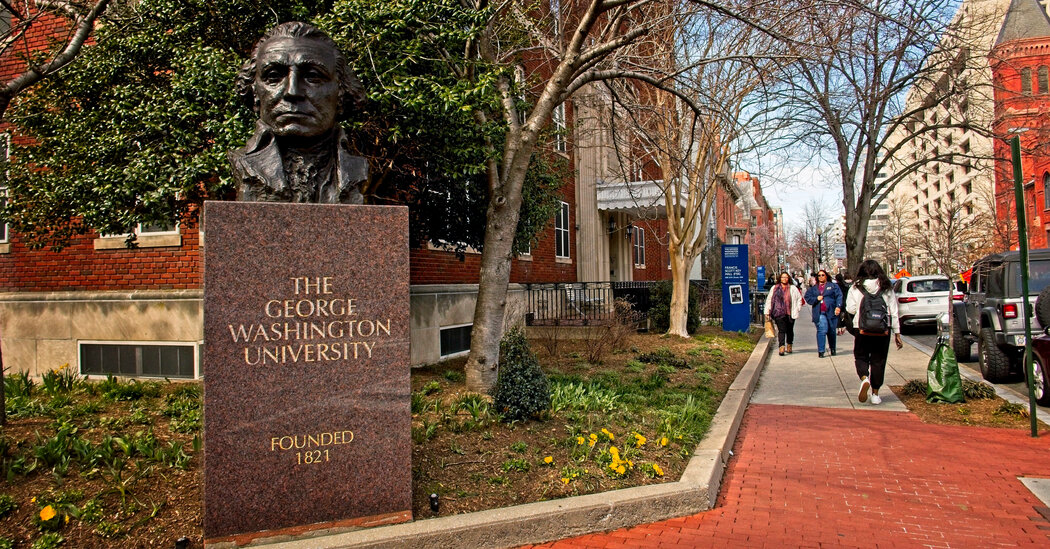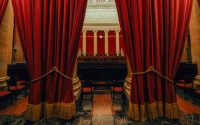Obama’s Presidential Center Is Rising, Finally, in Chicago
More than eight years have passed since Barack Obama proclaimed that his presidential center would be built on Chicago’s South Side, where he got his start as a community organizer and politician.
The announcement brought a swell of pride to the city, which beat out Honolulu, Mr. Obama’s birthplace, and New York City, where he attended college, to land the museum honoring America’s first Black president.
Two presidents and multiple lawsuits later, the center is finally taking shape, its half-finished concrete skeleton rising along Stony Island Avenue near Lake Michigan. The planned opening? Late 2025.
Many South Siders are proud of Mr. Obama and excited about the museum, which is expected to bring investment to long-neglected blocks, employ people from the neighborhood and draw tourists to a part of Chicago that many visitors overlook. But there is also widespread angst, built up over years, that the center will drive up rents and change the essence of the city’s southern lakefront, home to many Black residents.
“I support the Obama Center. We deserve to have nice things in our neighborhoods, too,” said Kareema Bass, a teacher who fears being displaced from the South Shore neighborhood, not far from the museum. “At the same time, we deserve to be able to stay in these neighborhoods.”
When Mr. Obama first told Chicago he would build his museum on the South Side, Rahm Emanuel was still the mayor and Donald J. Trump was still pondering whether to run for president. A planning and construction process that was expected to take five or six years may now last more than a decade.
Mr. Obama’s choice of Jackson Park, a beloved green space designed by Frederick Law Olmsted that hosted the 1893 World’s Fair, brought protests and lawsuits. Delays piled up as opponents argued in federal courts that the center was an improper use of public land. Though construction started two years ago and city and federal permits are in place, some city parks advocates are still asking judges to intervene.
“Obviously, it was hard,” said Valerie Jarrett, the chief executive of the nonprofit Obama Foundation, which will run the center, and a senior adviser to Mr. Obama during his presidency. “We had a lot of litigation. We had to go through what was a very important process to the Obamas, working with the community to make sure that the plans for the campus were consistent with their wishes.”
In recent decades, other presidents’ libraries have opened within five years of them leaving office.
Mr. Obama is the rare Chicago transplant to gain broad acceptance as a true Chicagoan. When the former community organizer returned after law school, he married Michelle Obama, who grew up in South Shore. He won election to the Illinois General Assembly and the U.S. Senate.
But Mr. Obama’s efforts to build his presidential center have had unlikely echoes with his start in Chicago, when he helped organize South Side tenants concerned about water contamination and asbestos. These days, worried that the Obama Center might price out longtime renters, a younger generation of community organizers has mobilized to seek housing protections, though the organizers say they do not want to block construction of the center.
“These issues have existed,” said one of those organizers, Dixon Romeo, the executive director of an advocacy group called Not Me We, “but the core of this campaign is that we know they’re being deeply exacerbated because of the force that is the center and what speculative real estate folks think can come with that.”
Unlike his 13 immediate predecessors, from Herbert Hoover to George W. Bush, Mr. Obama opted not to seek a publicly accessible presidential museum and library operated by the National Archives and Records Administration. Instead, he decided to build a privately operated facility that would receive some artifacts on loan from the archives. The National Archives also operates its “first fully digital presidential library” about Mr. Obama’s tenure, which includes a website and a closed-to-the-public storage space in the Chicago suburbs.
Many of the records from Mr. Obama’s presidency were digital, a contrast from 20th-century presidents who conducted business primarily on paper and needed to store more physical records. Still, some historians have expressed concern that Mr. Obama’s center will not include a physical research library.
Mr. Obama has outlined a vision for his center’s 19-acre campus that includes some of the usual trappings of presidential libraries — a replica Oval Office and exhibits from his time in the White House. But the plans also call for meeting spaces, a vegetable garden, a gym and a Chicago Public Library branch. Mr. Obama, who still owns a house nearby but spends most of his time in Washington, has described the facility not just as a museum, but as a gathering place for people in the neighborhood and a training ground for future leaders.
Skepticism comes naturally to Chicagoans, who in recent years have pushed back against plans by George Lucas to build a lakefront museum of narrative art (it is now under construction — in California) and to cordon off downtown streets for NASCAR racing (drivers have started their engines, but it remains a touchy subject).
Desmon Yancy, a City Council member whose ward includes the Obama Center site, said his constituents had good reason to worry. Other Chicago neighborhoods, like Logan Square and Pilsen, have transformed over the last generation as new development has driven up housing prices and wealthier newcomers have pushed out longtime residents.
Mr. Yancy, who was elected this year, said the presidential center had the potential to boost historic, mostly Black neighborhoods like South Shore and Woodlawn that have struggled with vacant storefronts, crime and poverty. But the people already there, he said, needed guarantees that they would share in those rewards.
“We’re not saying we don’t want people to come to this neighborhood and appreciate it the same way we do,” Mr. Yancy said in his South Shore office, about two miles south of the construction site. “We’re just saying, ‘It shouldn’t come at our expense, right?’”
Last month, Mr. Yancy introduced a bill that would set aside city-owned lots in South Shore for affordable housing, expand protections for renters and provide homeowners grants for repairs and down payments. Its prognosis in the City Council is uncertain.
Though local organizers failed in their original goal of getting the Obama Foundation to sign a binding benefits agreement with activists, they secured some housing protections from the City Council for the Woodlawn neighborhood, west of the museum, in 2020.
When South Shore residents were asked in nonbinding ballot questions this year whether elected officials should support protections like the ones Mr. Yancy has proposed, more than 90 percent of voters in some precincts said yes.
There are already signs of the area changing. Some residents said they had noticed property values spiking, rents rising, Zillow ads touting proximity to the Obama Center. On some blocks, conspicuously new houses have sprung up alongside decades-old brick structures that could use some work. Business owners are beginning to invest in dusty commercial strips.
Dwan “Dee” Stevens-Martin, a real estate investor who lives in Woodlawn, said she was excited about the Obama Center, which she sees as a business opportunity and a long-needed boost for her home neighborhood on the South Side.
She is so bullish on the area that she bought a disheveled building in South Shore that had most recently housed a motorcycle club. Her injection of money has transformed the building into a cafe, which she expects to open in the coming weeks, with framed art of notable Black Chicagoans, including Mr. Obama, and handsome furniture that she hopes customers will use as they sip coffee and hold business meetings.
For now, at least, her cafe is an outlier. The building across the street is empty and boarded up and, aside from a small strip mall nearby, commerce and foot traffic are minimal. But once the presidential center opens, Ms. Stevens-Martin said she hoped visitors would make the short drive to grab lunch or a coffee. As development spreads, she said, locals will have a more walkable neighborhood.
“The people don’t come out too much over here because there’s nothing to come out to,” she said. “So it’s almost a little bit of building it and then they’ll come.”


